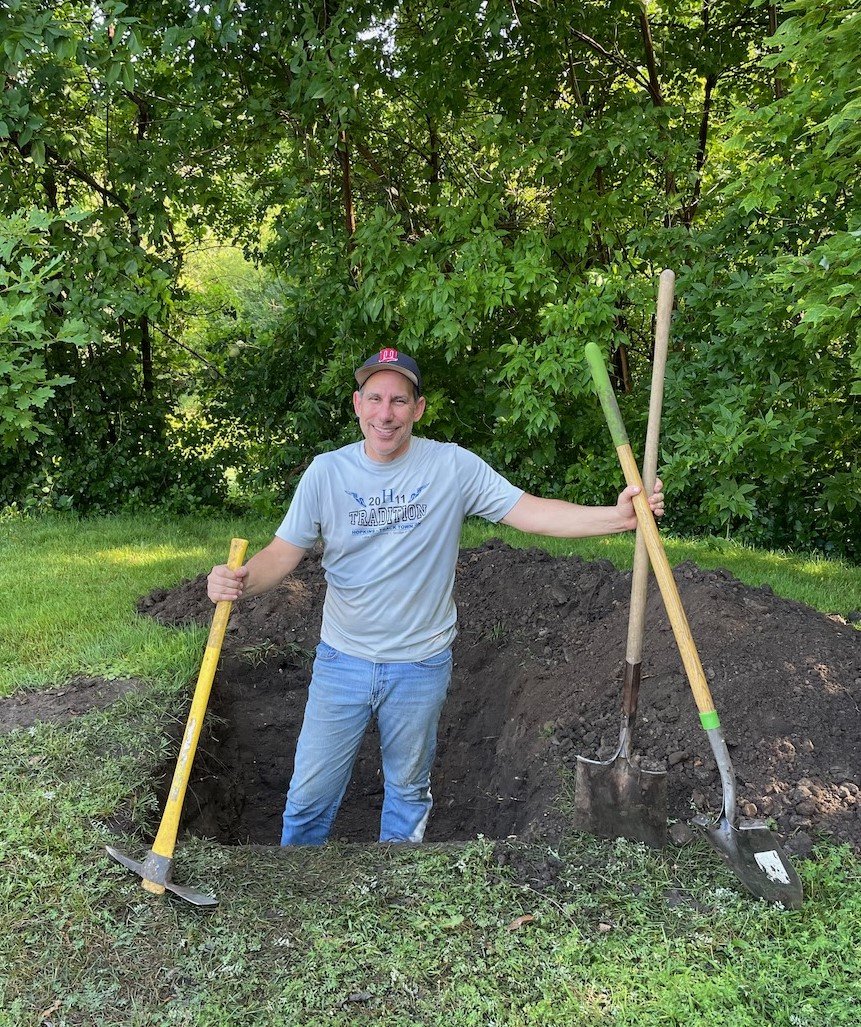Bet Shalom's Genizah
By Eric Bressler
A few times a year someone drops off some old prayer books or Judaica like tallitot at Bet Shalom, often after cleaning out an elder’s home. Ajia Collins, the Executive Assistant to Rabbi Locketz, says that a collection of these items accumulated in the basement storage for years. These include tallitot left behind after services that were never claimed from the Lost and Found. Essentially, our basement storage became a genizah (Hebrew for “hiding place”).
What is a genizah? It's a place where written materials and ritual objects that are no longer usable or needed and that contain Hebrew words with the name of God are collected. Often these are buried in cemeteries or in the ground to avoid desecration or additional deterioration through further usage.
I learned about genizahs in 1997 when my family toured Cairo, Egypt and visited the Ben Ezra Synagogue where the Cairo Genizah was discovered. We only saw the door to the upstairs room, but this storage place had held over 400,000 Jewish manuscript fragments and many documents from 13 centuries. Most synagogues have storage places like this, albeit much smaller.
Rabbi Locketz relates Bet Shalom’s story: “Over the years as things like old prayer books accumulated at Bet Shalom, we sent them to our Reform summer camp in Wisconsin, Olin-Sang-Ruby Union Institute (OSRUI) where each year on Tisha B'Av the campers and staff participate in this ritual of burial. I was part of this tradition at camp many times and decided that would should do the same at Bet Shalom.
“This summer as part of the Summer Learning series of Hineni, a program of Talmud Torah of St. Paul for adult Jewish learning and contemplative practices, I was invited to teach a class at Bet Shalom about a favorite ritual. This was the opportunity to create the genizah!
“As we looked for the right spot on our grounds to dig a hole, we discovered a forgotten fact: many of our flat grassy areas were planted over gravel so we could use those spaces as expansion parking! Finally we established a good place for the burial site.
“As part of the recent effort to encourage volunteerism at Bet Shalom, I asked who would be willing to dig the hole for a genizah on our grounds. Howard Yesnes answered the call. As if to prove the adage that volunteerism at the synagogue is about relationships, the same day and time that Howard was digging the hole, Steve Kohen happened to come to the synagogue. They are old friends and were able to catch up in the parking lot. Another reason to volunteer!”
On August 10th, a group of people from around the Twin Cities gathered by the burial site for some text study led by Rabbi Locketz and to perform the actual burial of the materials. We buried old prayer books and versions of the Bible that the participants had brought. The accumulated materials from Bet Shalom’s basement were also interred.
Ajia Collins comments, “The most interesting item that went to the genizah was a ketubah from 1972. A local framing company went out of business in the last year,” and they had the ketubah in storage. They assumed that the ketubah was connected to Bet Shalom so they sent it over. It was of course all in Hebrew. After Rabbi Locketz and Cantor translated the date and Hebrew names, Beth K. and I got down to researching it. We knew right away that the Hebrew names and date of marriage didn't correspond to any current congregants, but Beth was able to find the couple who fit the bill. I had actually communicated with the groom's sister for a totally separate reason (she's part of the MN Jewish Genealogical Society) and reached out to her. Turns out the couple had gotten divorced shortly after their wedding, so they never bothered to pick it up from the framing shop! Understandably, they didn't want it after all these years, so into the genizah it went. Rabbi Locketz said that the folks who attended the genizah event expressed some dismay at it being buried because of how beautiful it was. But he pointed out that, while it was beautiful to look at, it very likely represented something painful to the couple and their families.”
One participant brought up an interesting opportunity: There is a private Facebook group called Heritage Judaica-Twin Cities where people can post and drop off and pick up various kinds of Jewish ritual objects and materials. This is ideal for young people starting out and older people who are downsizing, for example.
Ajia concludes, “We likely won't add to the genizah for another couple years, but if any congregants have items they think should be buried or don't feel comfortable throwing away, they're welcome to connect with me.”
Cairo Genizah







